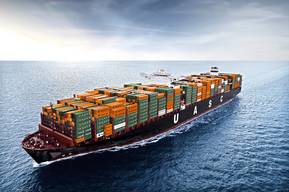Three refiners to spend more than $5 bln to upgrade or add units.
South Korean refiners are planning to spend over $5 billion on plant upgrades in response to tighter rules on shipping fuel, boosting production of low-sulphur fuel oil as well as other high-end products.
The refiners hope the investment, which comes ahead of the 2020 introduction of the new rules, will make them one of the biggest beneficiaries of the new regulations, with many competitors still waiting to commit to new spending.
"Not many refiners are doing so. Korean refiners are investing proactively," said Hwang Yu-sik, an analyst at NH Investment & Securities. "Low-sulphur products are more expensive and as a result they could make profits by producing better quality fuel oil."
In 2016, the International Maritime Organisation (IMO), the United Nations' shipping agency, capped the sulphur content in shipping fuel from 2020 at 5,000 parts-per-million (ppm) from 35,000 ppm at present.
South Korea has four oil refiners with a combined refining capacity of 2.964 million barrels per day (bpd), and is a mid-size player in the Asian bunker fuel market with average monthly sales of about 500-550 kilotonnes, according to analysts.
Globally, refiners have so far largely held off from making changes due to the high cost of adding desulphuriser units as well as secondary units such as crackers, cokers and visbreakers which typically convert residual fuel oil to gasoil, which will be increasingly in demand as a marine fuel.
However, SK Innovation, owner of top refiner SK Energy, S-Oil, the third-largest refiner, and Hyundai Oilbank, plan to spend more than $5 billion over the next one to three years on such units.
S-Oil, which is building a 4.8 trillion won ($4.3 billion) residue fuel oil upgrading and olefin production facility due for completion in the first half of 2018, sees margins worsening for high sulphur fuel oil from 2020.
"After the completion of the project, our company will not sell high sulphur fuel oil (and) ...we are expected to become one of the biggest beneficiaries of the IMO regulations," S-Oil treasurer Shin Kwan-bae said on a recent earnings call.
Hyundai Oilbank plans to expand its heavy oil upgrading capacity in the second half of 2018, according to its latest earnings report, but declined to give details on volume and spending.
The refiner plans to add a new solvent deasphalting (SDA) unit and expand its existing delayed coking unit (DCU) and hydrocracking unit (HCR) to produce more low sulphur gasoil.
SK Innovation said last week it would spend nearly $900 million to build a new 40,000 barrels-per-day (bpd) vacuum residue desulphurisation unit by 2020.
Wood Mackenzie analyst Suresh Sivanandam said the changed regulations would lead to a rise in demand for gasoil from the bunker sector and would push other refiners to look at investments or blending to meet demand.
"We will see more announcements in due course," he said. ($1 = 1,113.8400 won) (Reporting by Jane Chung
